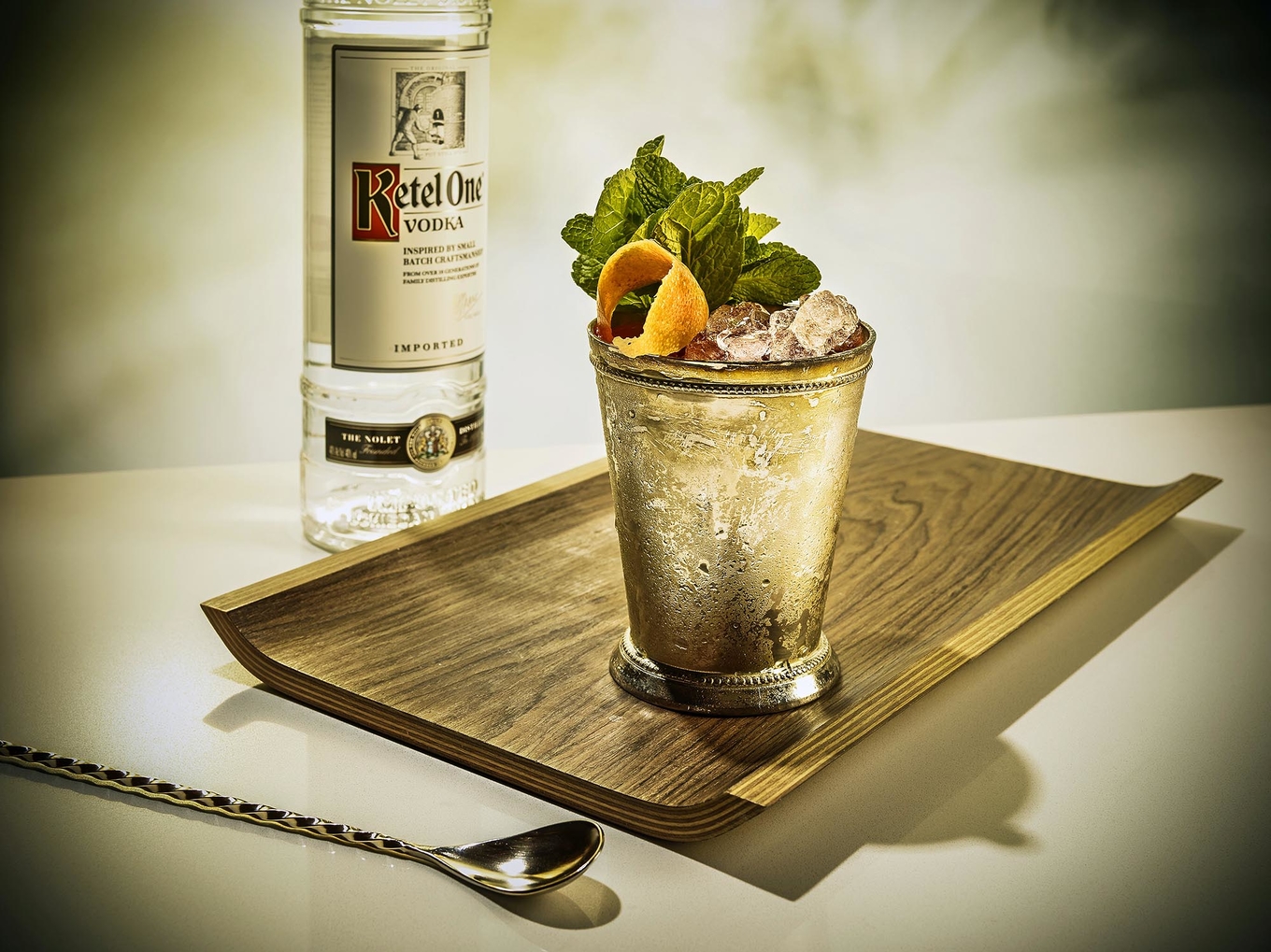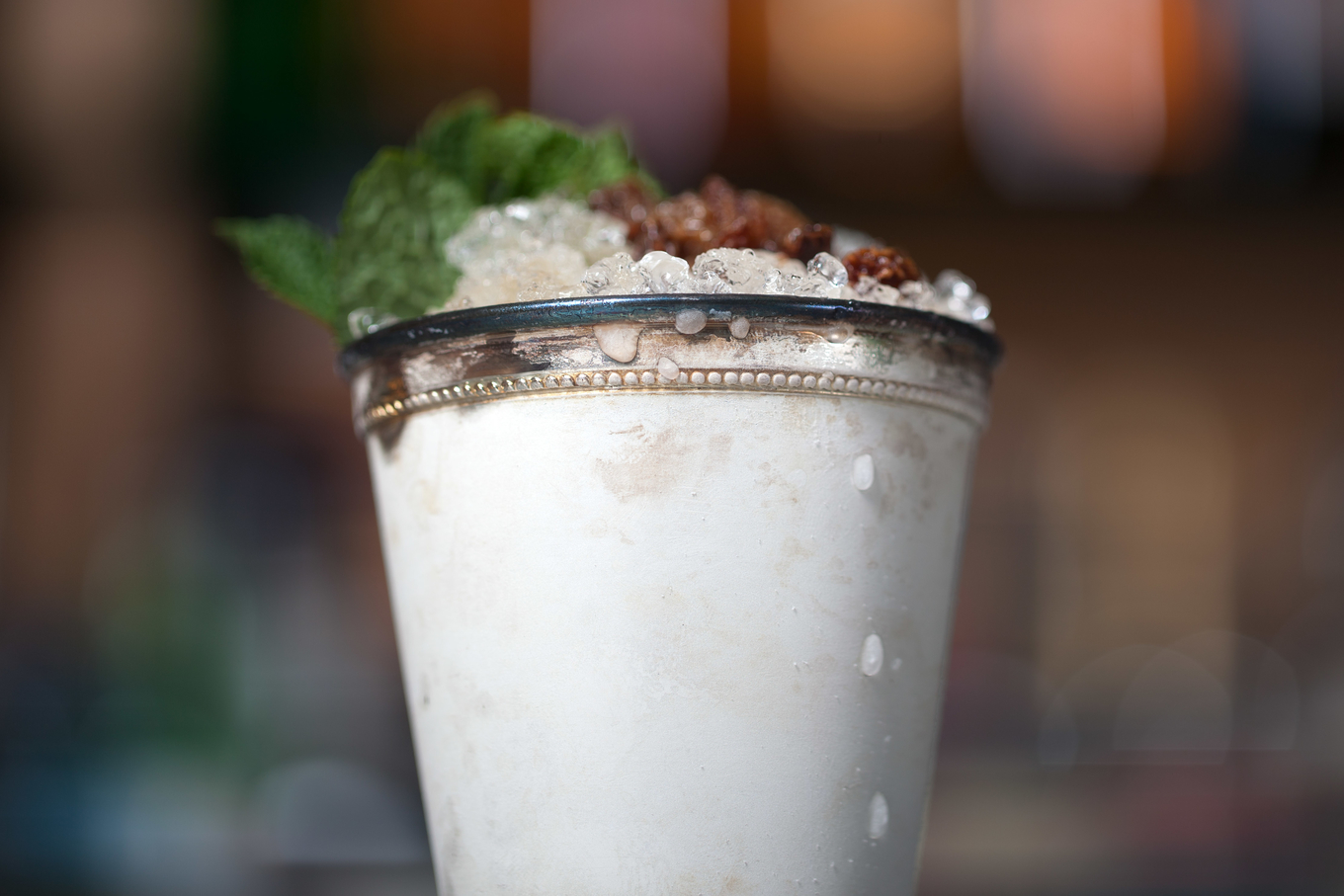Are you a Discerning Drinker?
Join thousands of like-minded professionals and cocktail enthusiasts, receive our weekly newsletters and see pages produced by our community for fellow Discerning Drinkers.
Words by Simon Difford
Photography by Dan Malpass

Juleps are tall drinks served over crushed ice and based on a spirit, liqueur, wine or fortified wine. They are most often served with fresh mint in julep cups (or Collins glasses if tins are not available). The bourbon or rye whisky based Mint Julep is by far the best known of its genre.
Tips on how to make
When making a Julep it is important to only bruise the mint as crushing the leaves releases the bitter, inner juices. If shaking as your mixing method (which I controversially recommend), then no bruising is required prior to shaking due to the action of the ice. Also, be sure to discard the stems, which may add bitterness.
It is imperative that the cocktail is served ice-cold so both the julep cup and the ingredients should be stored in a refrigerator prior to use and consider freezing your whiskey or other base spirit.
Some like to combine the ingredients in the julep cup in which the cocktail is served. I favour shaking and then straining the mixed drink into an ice-filled julep cup. Some proponents of shaking recommend combining the mint and other ingredients in the shaker and placing this, along with the serving vessel (preferably made of metal rather than glass) in a refrigerator for at least 30 minutes prior to adding ice, shaking and serving. The idea being that this ensures well-chilled while also allowing the mint to fully infuse. If you are organised enough to prep this far ahead of drinking, then I recommend fishing out the mint leaves prior to shaking.

Julep cups
Silver drinking cups were popular throughout the southern states of the USA, long before the julep. They symbolised achievement and were used at christenings, weddings and as prizes for competition winners, and indeed horse races. They were simple silver tumblers or beakers rather than julep cups.
Early Julep Cups are most associated with two silversmiths Asa Blanchard (1787-1838) of Lexington, Kentucky and brothers William and Archibald Cooper of Louisville. Asa Blanchard famously produced his Coin Silver Barrel Beaker which was shaped like the barrels in which bourbon is aged. As fashions changed, he went on to produce the familiar cups with smoothly tapered sides. It is this design that prevailed, some with a beaded rim and others with bands at the top.
The other silversmiths most identified with early julep cups are John Kitts and William Kendrick (whose business was continued by his sons and survives to this day as Merkley Kendrick Jewelers, "the oldest independent jeweller in Louisville and the second oldest in America").
Julep recipes
Variations on the Mint Julep include substituting the bourbon for rye whiskey, rum, gin, brandy, calvados or applejack brandy.
Champagne Julep
Cognac Julep
Georgia Mint Julep
Grapefruit Julep
Heather Julep
Mint Julep
Prescription Julep









Join the Discussion
... comment(s) for Julep cocktails
You must log in to your account to make a comment.